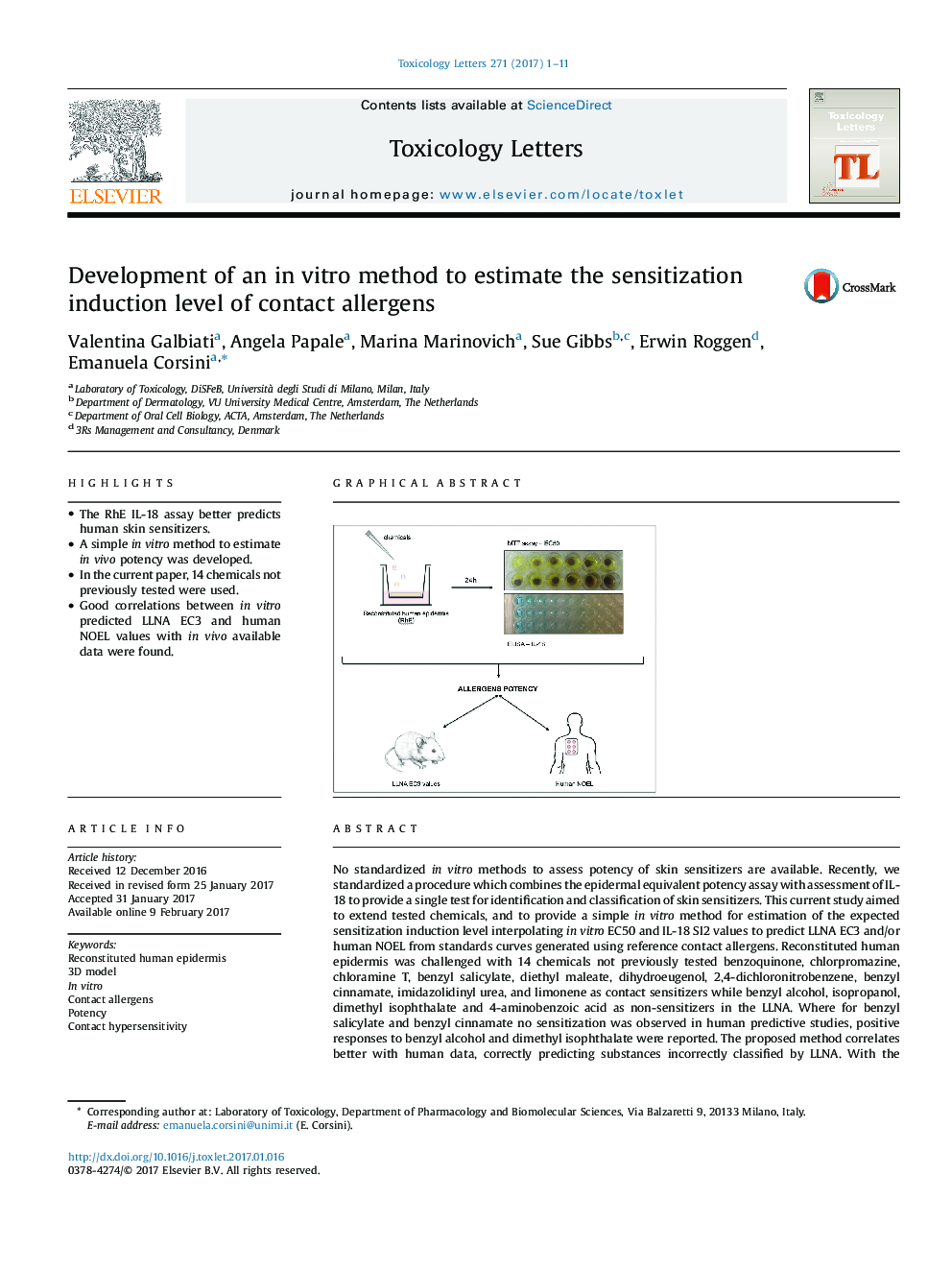| Article ID | Journal | Published Year | Pages | File Type |
|---|---|---|---|---|
| 5562115 | Toxicology Letters | 2017 | 11 Pages |
â¢The RhE IL-18 assay better predicts human skin sensitizers.â¢A simple in vitro method to estimate in vivo potency was developed.â¢In the current paper, 14 chemicals not previously tested were used.â¢Good correlations between in vitro predicted LLNA EC3 and human NOEL values with in vivo available data were found.
No standardized in vitro methods to assess potency of skin sensitizers are available. Recently, we standardized a procedure which combines the epidermal equivalent potency assay with assessment of IL-18 to provide a single test for identification and classification of skin sensitizers. This current study aimed to extend tested chemicals, and to provide a simple in vitro method for estimation of the expected sensitization induction level interpolating in vitro EC50 and IL-18 SI2 values to predict LLNA EC3 and/or human NOEL from standards curves generated using reference contact allergens. Reconstituted human epidermis was challenged with 14 chemicals not previously tested benzoquinone, chlorpromazine, chloramine T, benzyl salicylate, diethyl maleate, dihydroeugenol, 2,4-dichloronitrobenzene, benzyl cinnamate, imidazolidinyl urea, and limonene as contact sensitizers while benzyl alcohol, isopropanol, dimethyl isophthalate and 4-aminobenzoic acid as non-sensitizers in the LLNA. Where for benzyl salicylate and benzyl cinnamate no sensitization was observed in human predictive studies, positive responses to benzyl alcohol and dimethyl isophthalate were reported. The proposed method correlates better with human data, correctly predicting substances incorrectly classified by LLNA. With the exception of benzoquinone (interference with both MTT and IL-18 ELISA), and chloramine T (underestimated in the interpolation), a good estimation of LLNA EC3 and in vivo available human NOEL values was obtained.
Graphical abstractDownload high-res image (117KB)Download full-size image
